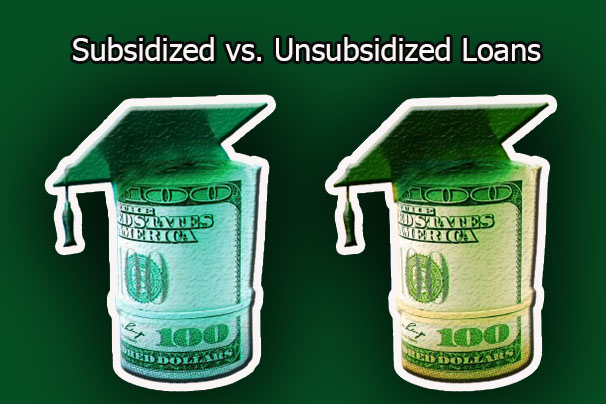Financing higher education typically involves navigating two main types of federal student loans: Subsidized vs. Unsubsidized Loans.

However, it is important to understand the main differences between these loan types to make the right decisions when it involves handling student debts.
This leads to the question of many: subsidized vs. unsubsidized loans: what’s the difference? In this article, we will be finding a thorough outline of these types of loans, their benefits and drawbacks, eligibility criteria, and how to compare them.
What is a Subsidized loan?
The U.S. Department of Education provides subsidized loans, a type of federal student loan, to undergraduate students who require financial assistance.
One of the major benefits of this type of student loan is that while the borrower is in school, the government covers the loan interest at intervals during any periods of deferment and during the six-month grace period after graduation.
Pros and Cons
Here are the benefits and drawbacks of taking out or applying for a subsidized loan:
Pros
- Reduced interest rates.
- Help with interest payments.
- Fixed interest rate.
- Grace period benefits.
- No interest accumulation.
- Federal loan protections.
- Qualification determined based on financial needs.
- Flexible repayment options.
Cons
- Possible reduced loan amount.
- Limited availability.
- Instant repayment.
- Complete application required.
- Yearly loan limits.
- Potential interest rate changes.
- Qualification depends on financial need.
- Professional or graduate students are not qualified.
Subsidized Loan Eligibility
Although this factor depends on the loan lender you choose, your eligibility for a subsidized loan is determined by your financial need and other criteria. To be eligible:
- Applicants must have non-citizen status and U.S. citizenship.
- Must be an undergraduate student.
- Must continue having satisfactory academic progress.
- Applicants must demonstrate financial need through FAFSA.
- Must be enrolled at least half-time in an eligible degree program.
What is an unsubsidized Loan?
An unsubsidized loan is another type of federal student loan accessible to both undergraduate and graduate students, no matter the level of financial need. Unlike a subsidized loan, the student is responsible for covering the interest on the loan during the grace period, any deferment periods, or while in school.
Pros and Cons
Here are the benefits and drawbacks of taking out or applying for an unsubsidized loan:
Pros
- Proof of financial need is not required.
- Accessible to both graduate and undergraduate students.
- Multiple repayment plans.
- Higher borrowing limits.
- A financial aid application is not required.
- Loan interest accumulation control.
- Flexible use.
Cons
- Possible increased debt.
- Interest accumulation.
- Varying interest rates.
- Possibly lead to taking out additional debts.
- Higher overall cost.
- Fewer relief options.
- Payments start after the grace period.
- No interest rate coverage.
Unsubsidized Loan Eligibility
Compared to subsidized loans, the eligibility criteria for unsubsidized loans are wider. To be eligible:
- You need to have U.S. citizenship or eligible noncitizen status.
- Applicants must be an undergraduate, graduate, or professional student.
- The financial need requirement is not necessary.
- You must be enrolled at least half-time in a qualified degree program.
- You must preserve an excellent academic performance.
Subsidized vs. Unsubsidized Loans: What’s the Difference?
Here is a table showing a fast comparison of a subsidized and unsubsidized loan and how they differ in various aspects:
| Aspect | Subsidized Loan | Unsubsidized Loan |
| Financial Need Demonstration | Required | Not Required |
| Who is eligible? | Undergraduate students with financial need | Undergraduates, graduates, and professional students |
| Loan Limits | Lower | Higher |
| Interest Payments | Covered by the government | Covered by the original borrower |
| Target Parties | Only for undergraduate students who need financial assistance | A wide range of students |
| Interest Accumulation | Does not accrue or increase | Accrues or increases |
| Loan Forgiveness | Access to federal loan forgiveness options | Limited forgiveness programs. |
| Application Requirement | Needs FAFSA completion for financial need verification | Application is possible regardless of the FAFSA completion. |
| Repayment Period Beginning | Starts after a six-month grace period | Start immediately after the grace period. |
| Interest Rate | Fixed but subject to adjustment | Fixed but subject to adjustment |
How to Choose Between Subsidized vs. Unsubsidized Loans
Selecting the right option for your student loan needs, between a subsidized loan and an unsubsidized loan, requires reviewing and considering certain factors that depend on your financial goals and current financial situation.
Meanwhile, a subsidized loan is a good option if you have financial needs, because this acts as an advantage to have the government make the interest payment while you are in school.
This can also decrease the whole cost of the loan. Moreover, they are ideal for students looking to mitigate their student loan debt burden while schooling and if they are qualified based on financial need.
On the other hand, an unsubsidized loan is accessible to students regardless of their financial needs. What’s more, you can consider this type of loan if you are not qualified for a subsidized loan or want to borrow a higher loan amount.
Besides, unsubsidized loans offer higher borrowing limits to undergraduate and graduate students, even though they will be responsible for the interest payment.
Final Thoughts
Before choosing a subsidized or unsubsidized loan, it is important to review your eligibility and consider your ability to make interest payments.
You should also have an idea of the whole amount you are borrowing to help you choose the type of loan that meets your academic plans and financial needs.



